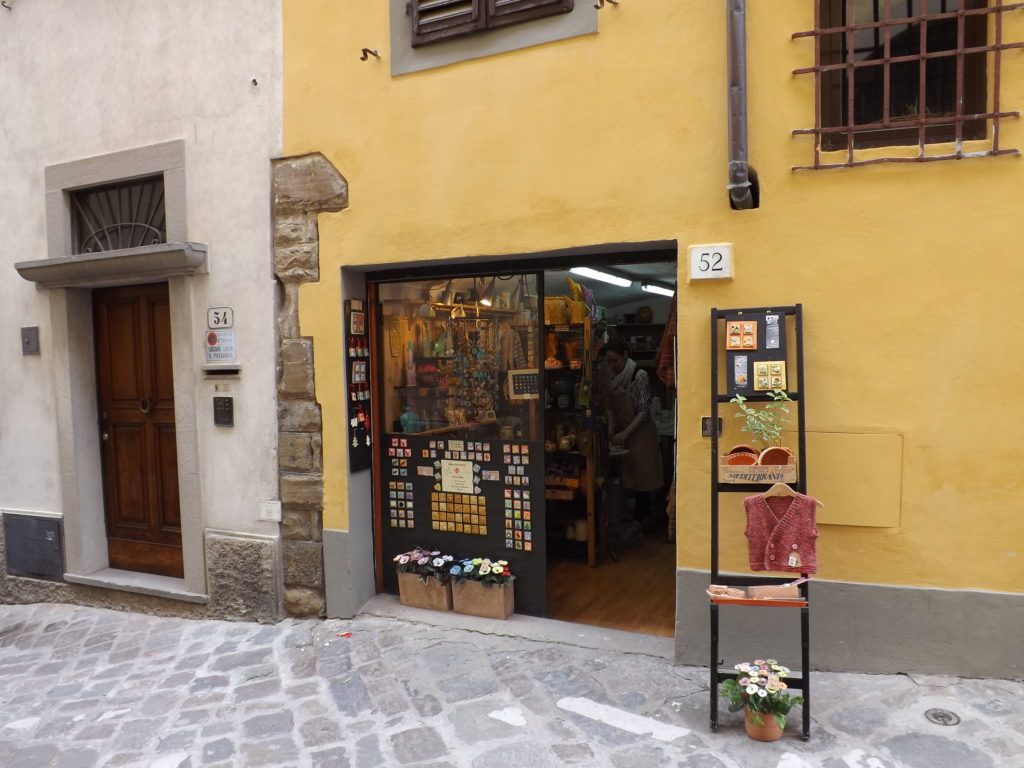March 2018, Linda Kinnahan
Visiting Florence last week with a group of Duquesne students, I encountered March dampness with spots of sun while climbing the Costa San Giorgio to revisit Loy’s home (the house number is currently #60, although during Loy’s residence it was numbered #54). She and Stephen Haweis bought the home in 1910, having lived in the area since leaving the Villino Ombrillino, a country home outside of the city, in 1907.
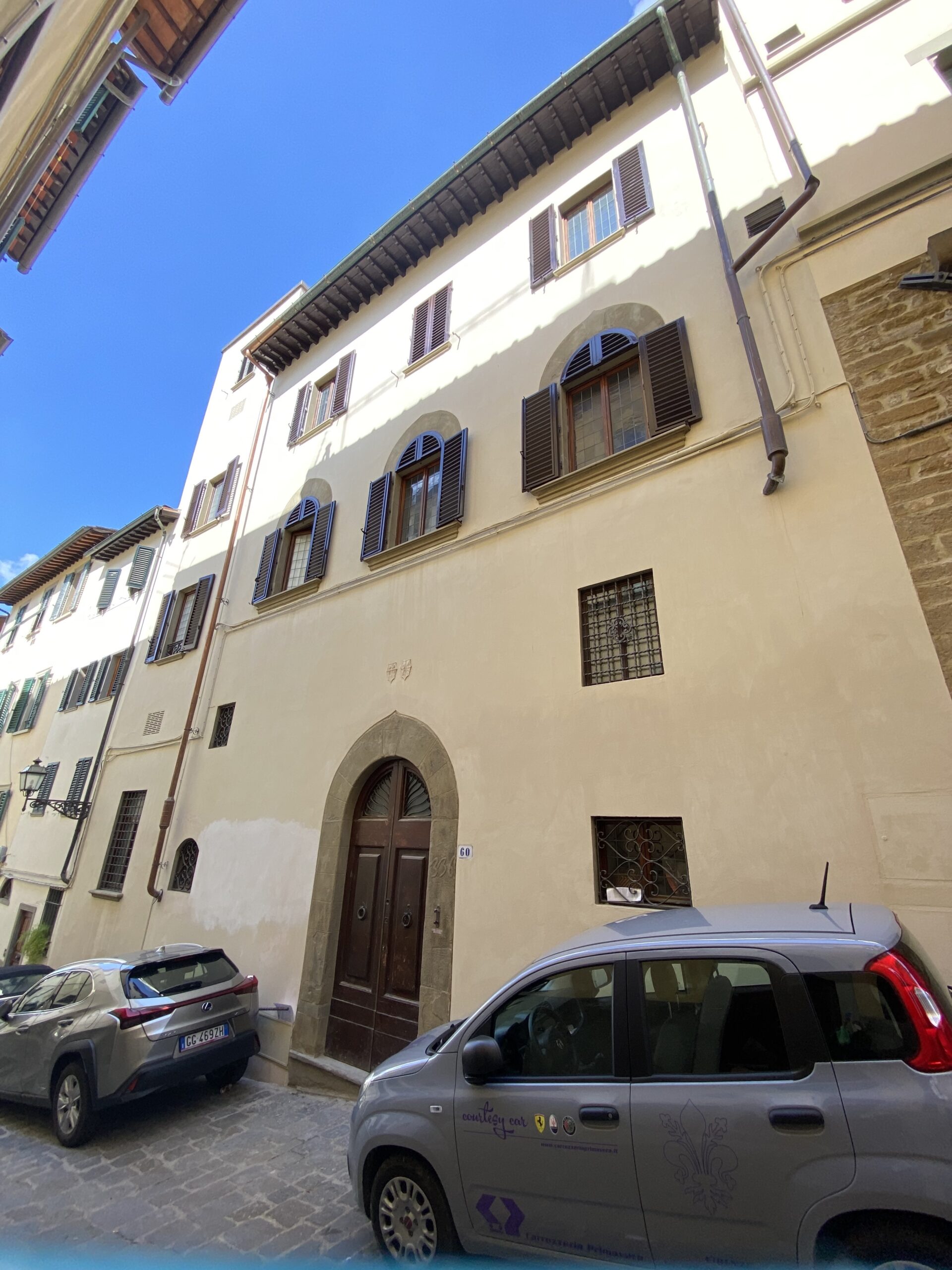
Located in the Oltr’arno area (across the river Arno from the city’s center), the Costa San Giorgio ascends from the Piazza Santa Felicita (just across the Ponte Vecchio), its cobblestones curving steeply up to the Chiesa di San Giorgio. Originally a 10th-century church dedicated to St. George, its huge wooden and iron gates stand near Loy’s home.
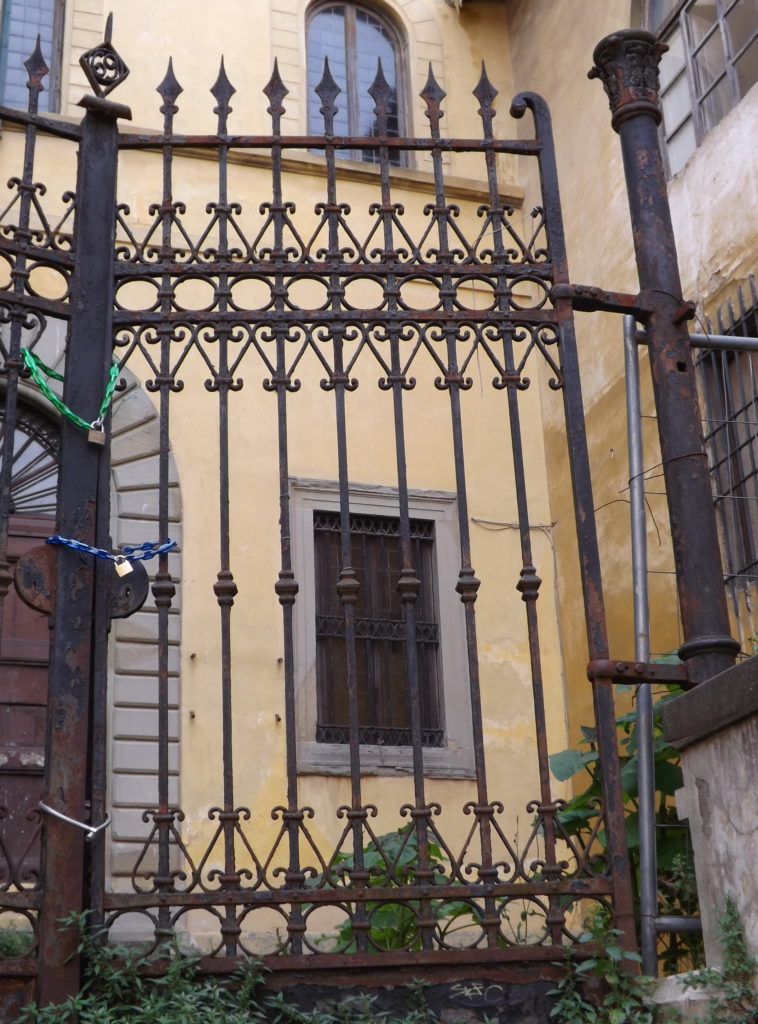
Loy’s “The Costa San Giorgio,” one of three parts of “Italian Pictures” (1914), records the
…passionate Italian life-traffic
Throbbing the street up steep
Up up to the portal
Culminating
In the stained frescoe of the dragon-slayer
Although the tidy two and three-story homes that loom above the street do not display the “messiness” Loy — with a self-described British point of view – observes in her 1910s Italian neighborhood, one’s contemporary eyes still catch the “fluidic bolts of sky” that “Shift among roofs” while imagining the “clacking/ Of all the green shutters.”
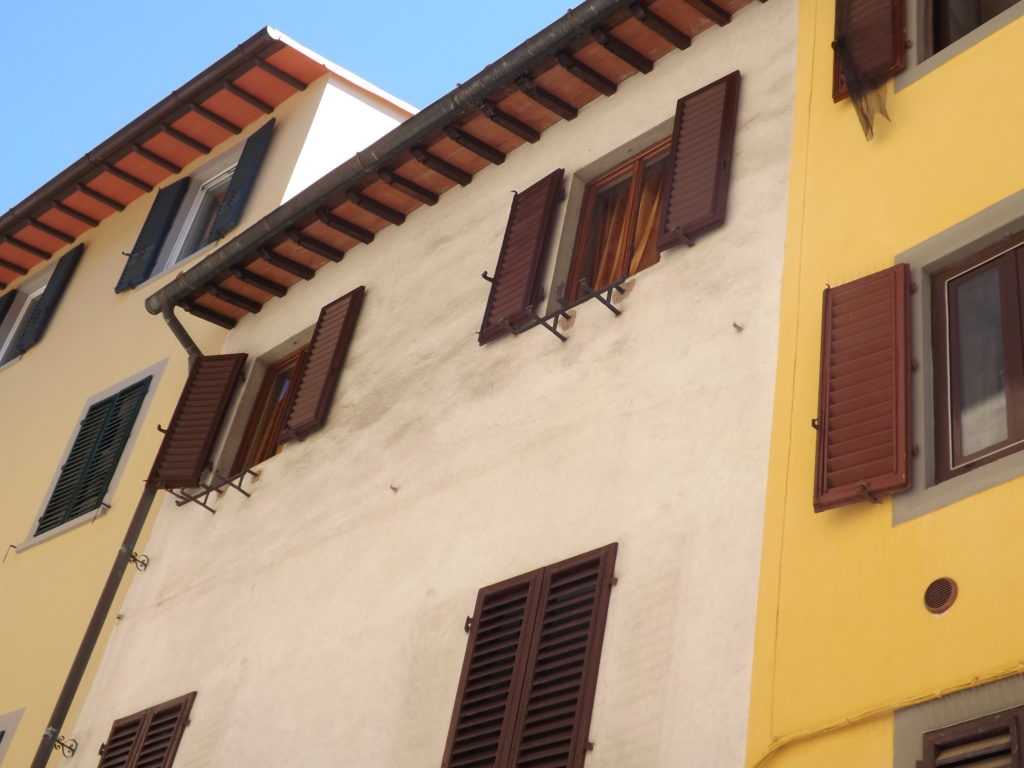
Loy would have looked down from her third story studio window in #54, and perhaps entered and exited the same exquisite wooden door fronting the home.

Virgin Mary and Christ child icons still adorn the exterior walls of buildings along the way.
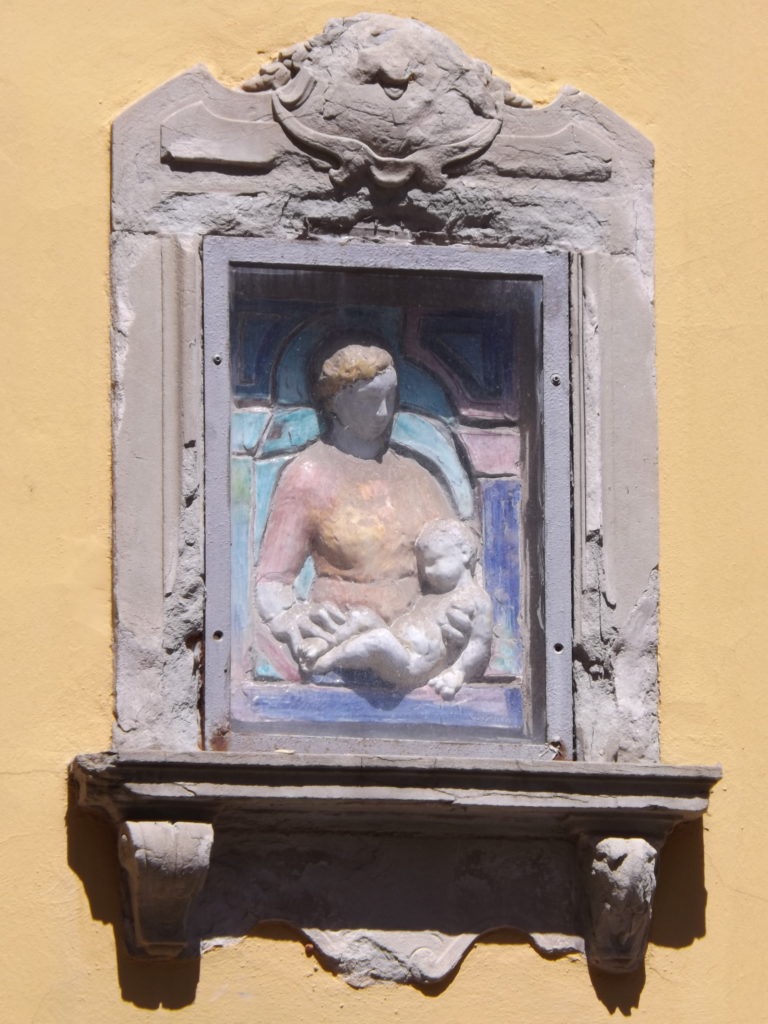
Up the street, at #52 , a lovely studio shop now opens onto the first floor, where the artist Emma Draghi (whose family has owned the house since the 1920s) makes and sells her pottery of Florentine clay, hand-knitted children’s sweaters, and other fabric creations.
